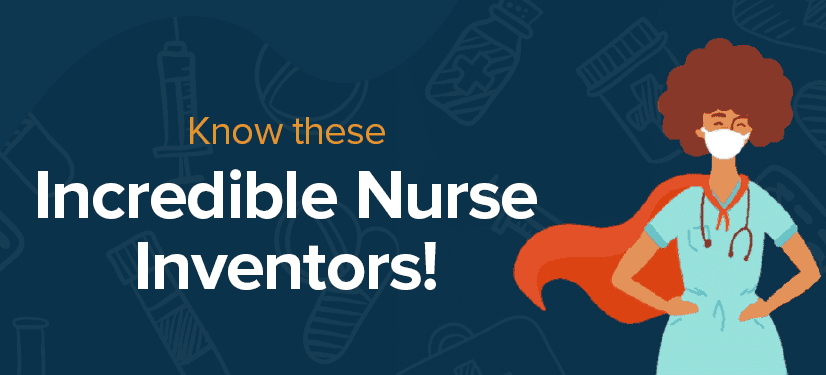
Nurses are incredible people!
We see them in hospitals, health care units, and at home, caring for individuals, attending to their tiniest needs, and nursing them back to health from injuries. But did you know that their devotion to helping people isn’t just limited to checking pulse and blood pressure, administering medicines, or being the right hand of a doctor? Some of them have gone the extra mile to produce game-changing medical equipment that is now sees a permanent place in the health care sector.
Read on, as we learn about some of these unsung heroes who acted on their ideas to create a better solution to some common medical problems.

When World War II ended, many war veterans returned home injured and struggled to perform basic tasks like eating on their own. That’s when Bessie Blount Griffin, an African American nurse and physical therapist, came up with a solution to help these veterans eat on their own. She invented a feeding tube that delivered mouthfuls of liquified food that one can eat at their pace. All they need to do is bite on the tube for the next morsel to reach the mouthpiece. Griffin’s invention made a breakthrough in medical technology and she earned the nickname ‘Wonder Woman.’ But Griffin didn’t stop there. She went into forensic science and became the first African-American woman to work at Scotland Yard in England.

In the 1940s, the feeding bottles for babies were mostly made of plastic or glass that didn’t change shape for babies to easily suckle more milk. Consequently, it caused a partial vacuum to occur leading to babies ingesting more air. Adda May Allen, who worked as a nurse at Columbia Hospital in Washington, created a disposable liner that allowed the sides to close in as a baby sucked on milk.

Anita Dorr was a nurse supervisor who joined the Army Nurse Corps to care for the injured during World War II. During her course, she realised that it was a tiring task for nurses to carry all the supplies that were needed to attend to an emergency case. She decided to solve this problem and help nurses stay prepared for any critical cases. With the help of her husband’s carpentry skills, she invented a cart where she arranged all the equipment anatomically, lined up medications, and added a clipboard for record-keeping. She fondly called it the ‘Emergency Nursing Crisis Cart’, which is today popular as the crisis cart or a crisis workstation. They are a bit modified now – of course – the cart is made of steel instead of wood and stocked with disposable supplies.

Accuracy, speed, and error-free procedures are critical in any hospital, especially in intensive care units (ICUs) and newborn intensive care units (NICUs). In these units, even a tiny mistake or misplacement of the complicated medical devices can have serious consequences. Hence, nurses need to be extra cautious while delivering medicine through assorted IV catheters, pumps, and ports. In 2003, two sisters, Teri Barton-Salinas and Gail Barton-Hay invented colour-coded IV lines to reduce medical errors. The idea stemmed from their specialist work at the newborn intensive care unit, where nurses are needed to select the correct IV lines within seconds from a tangle of clear plastic tubes, to administer medication properly in a crisis.

Neomi Bennett, a nursing graduate from the University of London, noticed that many of her patients avoided wearing compression socks. These socks help prevent Deep Vein Thrombosis (DVT) – a deadly blood clot condition – in patients. But the patients found them too difficult to put on. That’s when the idea of the Neo-Slip struck her. Neo-slip is a pouch that prevents friction and helps the patients put the socks on easily. So far, Neomi has picked up two national awards for his innovative stocking aid. “It all started with an essay,” says Neomi Bennett. “During my nursing training at Kingston University in London, we were asked to explore problems that student nurses experience, and I chose to look at this issue.”
Speaking of medical innovations, learn how to make a first aid box.
Here are other articles that you might also be interested in.
Medical inventions that changed the world
Books are Tanaya Goswami’s first love and cheesecakes come a close second. Talking about movies, music, calligraphy, politics, and Elon Musk will get you listed under the friends’ section of her diary. Ever since moving on from her job as an English lecturer, she spends her time at BYJU’S crafting stories filled with emotion and sprinkled with sarcasm. Outside of work, she’s either learning something new (French, most recently!) or is curled up with a book and a cup of coffee. She firmly believes that discovering what you don’t know is the key to knowledge and is constantly working towards improving herself. Drop in a line at storyweavers@byjus.com if you liked her stories, have something nice to say, or if you have compelling ideas to share!